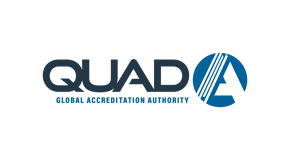As the COVID-19 pandemic enters its second year, it is essential to remember that new cases are reported every day across the globe. India is daily breaking records at well over 300,000 new cases per day as of this writing. Additionally, difficult situations persist in Turkey, Brazil, and the painfully slow vaccination progress in much of the underdeveloped and developing world. It's helpful to revisit early lessons from the pandemic to keep your patients and staff safe and think about how each facility can help alleviate some of the direst threats.
Infection control practices are still essential. We often think about the surgical site or healthcare-acquired infections. Still, general disease transmission also poses a significant risk to the patient and community. Studies routinely demonstrate providers worldwide fail to observe recommended hand hygiene practices regularly. Hand hygiene and other safety measures like surface and environmental cleaning and personal protective equipment are critical to reducing the risk of transmission of COVID-19 and others. Many countries that fared well throughout 2020 and into the new year relaxed formal requirements and saw the populace follow suit. Letting their guards down, each of these cases has resulted in renewed community spread, increased infection rates and deaths, and a return to draconian lockdowns.
Considering COVID-19, facilities must:
- Have an infection control policy and emergency plan including, COVID-19.
- Screen for the known COVID-19 symptoms; carefully manage any patients with symptoms or co-morbidities to prevent transmission.
- Emphasize environmental cleaning for public areas and surfaces to ensure: constant cleaning with alcohol; exam rooms are cleaned after each patient; and remove high touch items, such as reading material.
- Encourage staff to report symptoms and be allowed sick leave if staff or a household member becomes a known or suspected COVID-19 case.
- Post signs about COVID 19: "Stop the Spread"; cough and sneeze etiquette; and hand hygiene.
- Supply tissues, hand sanitizer, and personal protective equipment such as masks, gloves, and eyewear to staff and patients. Strictly enforce facial covering and social distancing requirements.
- Only provide services if adequate staffing is maintained.
- Quad A Surveyors are enforcing up-to-date COVID-19 guidance. Facilities will be cited for failure to adhere to this guidance, which evolves as we learn more about the disease and concerning variants.
It is crucial to remember that all healthcare facilities, no matter their location or specialty, are part of the community infrastructure. For this reason, they should consider their roles in responding to the outbreak. There continue to be reports of shortages of ventilators, oxygen, and oxygen concentrators harming patient treatment in countries like India. Consider how you or your facility may be in a position to provide or secure needed equipment to help colleagues all over the world. With some countries seeming to be turning a corner on the pandemic, we mustn't assume a swift conclusion. Vigilance and mutual support will be critical to ensure that COVID-19 is stopped before 3rd and 4th generation variants emerge to threaten our practices, economies, and societies. As we have seen throughout this emergency, virus strains can easily travel great distances and borders to instantly threaten every corner of the globe.


